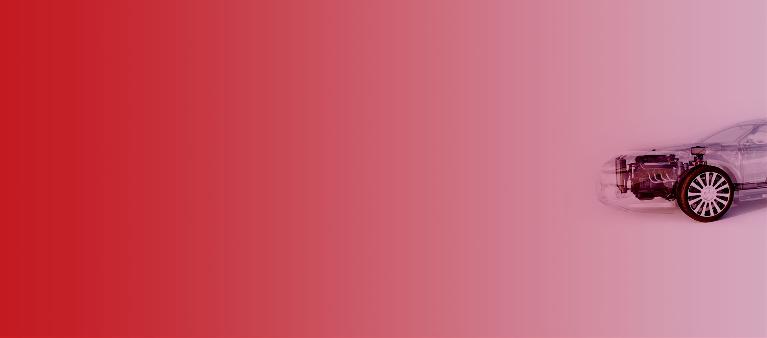Automotive Sector in Transition
![{[downloads[language].preview]}](https://www.rolandberger.com/publications/publication_image/rb_automotive_in_transition_download_preview.jpg)
Carsharing, self-driving vehicles, and alternative propulsion systems are radically altering the automotive ecosystem.


The automotive sector faces a sea change. Though more than 70 percent of all the miles driven on our roads are currently driven in privately owned vehicles, carsharing and ridesharing models are set to account for an ever-greater share of overall mobility in the next decade. After that, autonomous taxis, dubbed robocabs, will likely see their own slice of the market rise to almost 30 percent by 2030. By that point in time only 45 percent of miles will be driven by people in private cars.
The radical nature of this evolution will have significant consequences for the entire automotive industry, as the Roland Berger experts found in their new scenario-based study, entitled "A CEO agenda for the (r)evolution of the automotive ecosystem". They identify five points of particular importance to incumbent automakers as they strive to get set for the future transformation of the automotive ecosystem.
This next-generation ecosystem will see autonomous driving play a very central role. "The National Highway Traffic Safety Administration in the US recently recognized the computer as a new type of vehicle operator. This marks another milestone on the road to the realization of self-driving cars," explained Wolfgang Bernhart, Partner at Roland Berger. "As a direct result of this, robocabs are going to successively establish themselves in our cities as a low-cost and convenient alternative to owning a car."
Driver attitudes are already beginning to change in fundamental ways, supported by the shared economy phenomenon. New business models are springing up in the mobility sector and competing for market share with traditional OEMs. "Of course, cars will still be manufactured and sold in the future," said Bernhart. "But the highest-margin business models will be those that offer mobility services. The question is, who will be the ones reaping the profits?"
The experts' detailed analysis concludes that self-driving cars will account for some 40 percent of total profits in the automotive sector by the year 2030. Incumbent OEMs are the losers in this scenario. Whereas in 2015 they were still able to claim almost 40 percent of the profits for themselves, by 2030 they will garner only a little over 20 percent. The supply industry will be no less hard hit: Roland Berger calculations indicate that automotive suppliers' share of profits is likely to be slashed in half, from about 30 percent in 2015 to less than 15 percent in 2030.
On the upside, the new environment will present new business opportunities for OEMs. For one thing, they could evolve to become competitive providers of mobility solutions. And for another, many of today's automakers could establish themselves as suppliers to the mobility service providers of the future. One way of doing so might be to specialize in highly efficient manufacturing of fully autonomous vehicles built to spec for mobility service providers.
But one thing is for sure: Traditional OEMs will not have the market to themselves any more – new entrants threaten to push established players successively into the back seat. New firms with innovative business models will be seeking direct contact with end customers – a threat that OEMs need to take seriously: "In a world of self-driving robocabs there is ever less scope and ever less need for individual relationships between users of mobility services and manufacturers of vehicles," explained Roland Berger Partner Jan-Philipp Hasenberg. "OEMs risk losing contact with their direct target group."
Most automakers can already sense the change that is taking place and have brought new business models to market – from electric powertrains to carsharing offers and wider mobility services. But in many cases these initiatives are not sufficiently anchored in the core business. The majority are experiments on the fringes of the existing business model or optimizations based on existing technologies. "OEMs should stop following old thought patterns and proceeding step by step along familiar paths. They need to think long and hard about the role they want to play in the future world of mobility," advised Hasenberg. "Not every automaker will manage to make the shift to providing global mobility services. So they need to start coming up with alternatives now and set themselves on the right road. The longer an OEM waits, the less leeway they will have in the market: the profit margins will be tighter and the competition greater."
To help OEMs make the transition successfully and in good time, the Roland Berger experts identified five important steps to take. Each company should set their own individual focus in line with the future role they wish to play in the market.
Revitalize your agility: Industry incumbents should shake up their organizational structures. Cooperative business models along the entire value chain are what count now; functional silos are a thing of the past.
Reinvent your customer experience: In this era of rising pollution and densely populated megacities, the focus is shifting more and more toward efficient, convenient and comprehensive mobility offerings. Less and less consideration will be given to whether a vehicle is "fun to drive".
Refocus your innovation: Automakers need to move on from optimizing car features to providing intelligent services that customers really want. Comprehensive mobility offerings require new apps, broad-based data capture and intelligent algorithms to make the best use of big data.
Reframe your manufacturing processes: OEMs should check whether or not their production processes are sufficiently efficient and flexible. Product innovation needs to give way to process innovation.
Reshuffle your talent base: Transforming your business model to offer mobility services also means adapting the working environment you offer, throwing out rigid hierarchies and creating a culture that attracts digital natives.
"It is a matter of life and death for OEMs to challenge their existing structures in light of the next-generation ecosystem," said Wolfgang Bernhart in summary. "Continued success in the automotive market depends on kicking off the crucial changes sooner rather than later."

![{[downloads[language].preview]}](https://www.rolandberger.com/publications/publication_image/rb_automotive_in_transition_download_preview.jpg)
Carsharing, self-driving vehicles, and alternative propulsion systems are radically altering the automotive ecosystem.